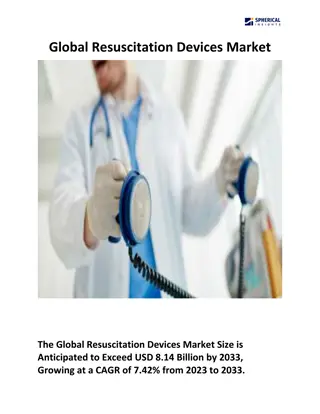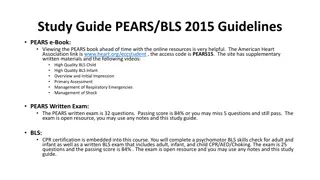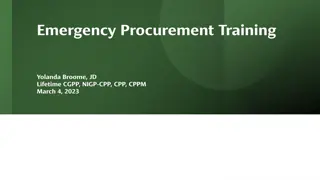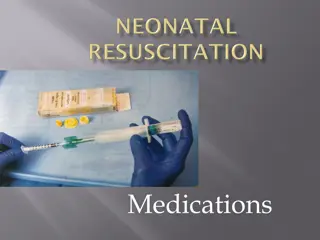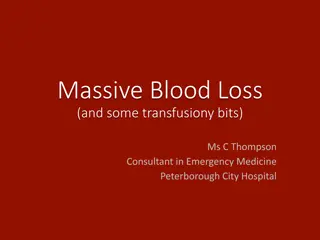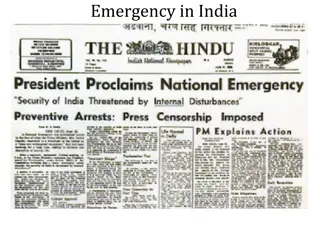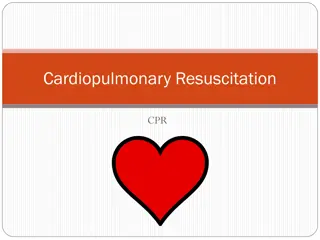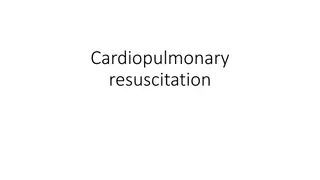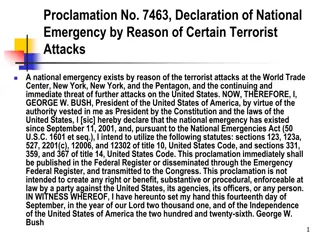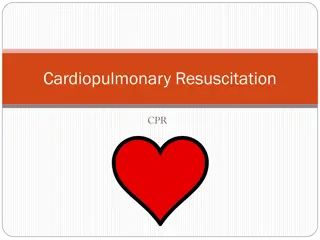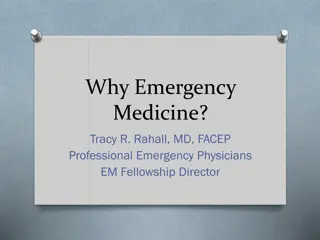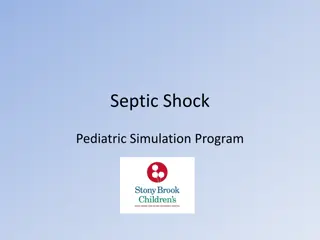Understanding Family Presence During Resuscitation in the Emergency Department
This presentation explores the lived experiences of families present during cardiopulmonary resuscitation (CPR) in the emergency department, aiming to provide insights that can enhance care for individuals who wish to be by their loved ones' bedside during critical moments. The study focuses on the structural description and significance of family presence during resuscitation, highlighting challenges, research questions, and the facilitation process involved in obtaining family consent and understanding. Recommendations are also provided concerning the presence of family members during resuscitation situations.
Download Presentation

Please find below an Image/Link to download the presentation.
The content on the website is provided AS IS for your information and personal use only. It may not be sold, licensed, or shared on other websites without obtaining consent from the author. Download presentation by click this link. If you encounter any issues during the download, it is possible that the publisher has removed the file from their server.
E N D
Presentation Transcript
Family Presence During Resuscitation: To Be or Not To Be Shirley Strachan-Jackman RN(EC), MN, ENC(C) Nurse Practitioner Emergency Medicine Toronto Western Hospital- University Health Network Euro Nursing 2015- July 29, 2015
Outline This presentation will discuss the findings of our phenomenological study that was undertaken to describe the lived experiences of families who were present during cardiopulmonary resuscitation (CPR) in the emergency department setting.
Significance A better understanding of family presence during resuscitation, will inform how care can best support the needs of individuals who wish to be at their family members bedside
Question? Recommend family presence during resuscitation Recommend against family presence during resuscitation
Background Family presence during resuscitation (FPDR) has gained increasing attention over the past few decades Routinely family members were not invited to be present Unit Council- families should be given the opportunity to be in the room during a resuscitation Research Challenge
Research Question What is the structural description of family presence during resuscitation in the emergency department? The purpose is to describe family members lived experiences when present during CPR of a loved one. Giorgi s Phenomenological Analysis
Process Family members were given a choice Facilitator assigned to family Given a package outlining the study before leaving the department Called to see if they would participate- consent Interview
Family Facilitators Ensure that relatives understand that they can choose whether or not to be present during resuscitations Explain that someone will be designated to care for them, regardless of their choice Discuss the patients illness or injuries and what the relatives will see when the enter the room Ensure relatives understand that they can leave and return at any time Explain resuscitation procedures in simple terms as the occur
Interviews Six participants consented & interviewed by two study team members Interview location determined by participant Audio Recorded Family member was asked one question- Describe your experience of being present during the resuscitation of your loved one. Participants were emotional & able to talk about their experience in great depth
Analysis 2 study team members & 2 research experts in phenomenological analysis & telephone consultation with Giorgi Interviews were transcribed verbatim Over the course of 5 meetings: Each analysis team member: Read & re-read each transcripts Identified meaning units for each transcript Together, discussed meaning units & identified focal meaning(s) for each transcript Focal meanings were discussed & transformed into language that best expressed the participants experience of witnessing resuscitation
Meaning Units Feeling there but not there Desire to be there but concerned about being in the way Hard, difficult experience but necessary to see with their own eyes Grateful for staff telling her everything/ support Shocked and scared but grateful everything possible was done Looked like the staff was hurting the patient at times but appreciated that they were fighting to save the patient
Meaning Units Fear of abandoning her family unit Fearful of the unknown if they had not been present Need to know and be able to share with family members what happened Wanting to be close to loved ones Being reassured by seeing everything possible was done Confusion, disbelief, denial
Meaning Units Like a movie ...there but not there Memories were haunting, remembering what she saw Afraid for their loved one Hoping and praying she would come back to life Emotional rollercoaster, relief when resuscitated Important role for English speaking family members to be able to explain what happened
Focal Meaning Push/ pull- striking a balance Need to be guided in this foreign land/ foreign language by the facilitator Hard and difficult experience- intense and profound- but wanted to be there Expectations weigh heavily on the family member who is present, but was necessary in order to fulfill the family expectations Spiritual connections Vacillating emotions
Study Finding: General Structural Description The essence of witnessed resuscitation is: A profound emotional experience where the onus on the witnesser demands in the moment, shifting of how to be within their role as conduit INTERMEDIARY between health care team and family during this critical incident in the patient s and family s life journey
Recommendations Recognize that care is an opportunity to strengthen individuals during a critical time in a person/family s life journey, and positively impact on family s health Nurse Coach: Focus on the Witnesser Appreciate individual as family Help them to negotiate how to be Address emotional issues as needed Provide information/interpret what is happening
Recommendations Health Care Team Recognize importance of witnesser who can provide information about the patient in the moment Information valuable to support care and decisions
Limitations 6 participants older with chronic illness 2 successfully resuscitated but died within 3 months all female all non English speaking ( TWH Catchments )
Summary Resuscitation teams often take for granted that they will be the last people to be in the presence of dying patients. But being present in these last moments is a privilege, and sharing this privilege may be the greatest comfort that healthcare professionals can offer grieving relatives (Boucher, 2010)
Acknowledgements Participants Funders Nursing Research Challenge & Krembil Funding Study Team Shirley Strachan-Jackman; Sheila Foggie; Sharon Foskett; Licinia Simoes; Tim Stewart; Helen Kelly Consultants: Dr. Debra Bournes, Nadine Cross, Dr. Sue Bishop; Dr. Amadeo Giorgi, TWH ER Staff




